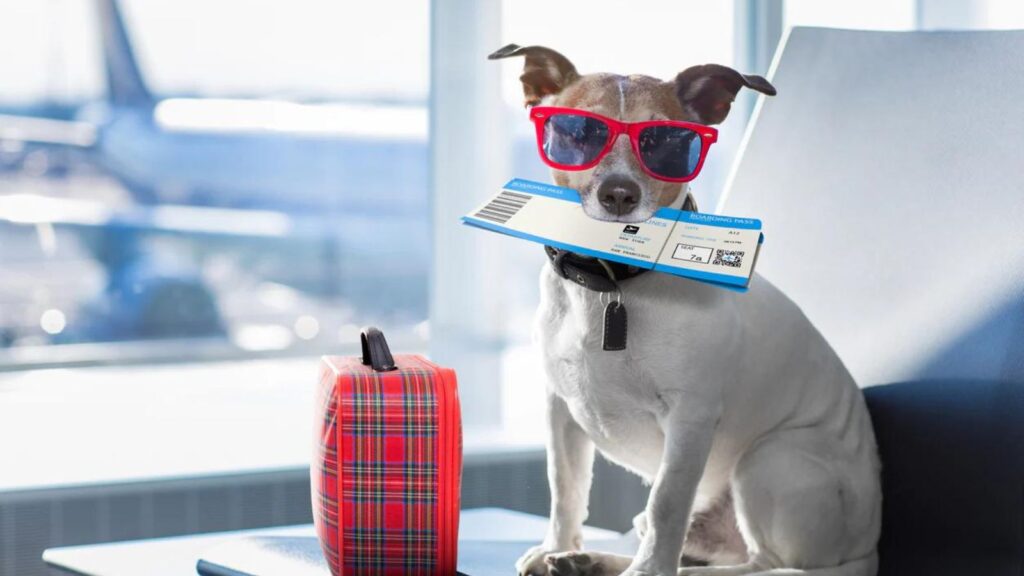Tips for Traveling With a Dog isn’t always a walk in the park. It requires careful planning and a good understanding of your furry friend’s needs. But don’t fret; with the right tips, it can be a breeze.
Whether it’s a road trip or a flight, there are ways to make the journey smooth for both you and your pet. From packing essentials to finding pet-friendly accommodations, we’ve got you covered.
So, buckle up and get ready to hit the road with your four-legged companion. Let’s dive into some handy tips for Traveling With a Dog.
Tips for Traveling With a Dog
Before embarking on your journey with your furry friend, a visit to the veterinarian is a crucial step. This not only ensures your pet’s health but also saves you from possible troubles on the road. An unanticipated health issue can turn a fun-filled trip into a nightmare. Therefore, getting your dog checked by the vet is a ringing endorsement for your travel plans.
When visiting the vet, it’s essential to update your dog’s vaccinations. Discuss your travel destinations with your pet’s caregiver, as there might be risks in certain areas that require additional vaccinations. For example, if an area is known to have a high incidence of Lyme disease, your pet may benefit from a preventative vaccination.
Also, discuss your dog’s diet and exercise regime. Make sure you understand the best type of food to pack, how much water to carry, and nuances in their exercise routine that the new environment might demand. Making changes in their diet and exercise can lead to stress and behavioural issues, hampering a smooth trip.
Remember that all pets don’t react the same way to travel. A significant concern for many pet owners is motion sickness, as it can cause vomiting and salivation in your pet. If your pet has never travelled before or if it’s known to show symptoms of motion sickness, your vet can provide the right medication to ease this discomfort for your pet.

Prepare a Doggy Travel Kit
After ensuring your pet’s health through a vet check-up, the next key step in preparing for a dog-friendly trip is creating a comprehensive doggy travel kit. It’s vital to have all necessary supplies on hand to meet their needs and comfort during the journey.
The contents of a doggy travel kit can vary depending on individual pet needs. However, there are some standard items every owner should consider:
- A portable water and food bowl set. Your pup will need to stay hydrated and fed, so bring along collapsible bowls for convenience.
- Good quality dog food and treats. Maintaining their regular diet is crucial to avoid digestive issues.
- A leash and a harness. These items not only allow you to maintain control of your furry friend, but also ensures their safety at all times.
- A comfortable blanket and a toy or two. Familiarity can greatly help to reduce stress.
Additionally, you cannot overlook the significance of first aid for your pet. Preparing a pet first aid kit can be a true lifesaver in case of emergency. This should include items like bandages, antiseptic wipes, tweezers, and a pet-friendly antidiarrheal.
Dog waste bags are another essential item. Responsible pet ownership entails cleaning up after your pet, and this responsibility extends to travelling. Having a sufficient supply of these bags on hand will ensure you’re prepared.

Ensure Proper Identification
When it comes to Tips for Traveling With a Dog, proper identification can’t be stressed enough. It provides an invaluable safety net if one’s pet gets lost during the trip. Not just any identification, mind you, but proper identification.
Few are aware that there are different methods for pet identification, each with its benefits. Let’s delve into this topic and examine the options available.
Consider starting with a collar tag. It’s a simple yet effective way of identification. Make sure to inscribe it with the dog’s name, owner’s contact details – both home address and cell number. Don’t forget to mention that the pet has been vaccinated and neutered if that’s the case. It will help anyone who finds a lost pet to make appropriate decisions.
Another method is the microchip. Most veterinarians recommend this option as a reliable backup to collar tags. If the collar gets lost or removed, a microchip will provide all necessary information. A microchip is a tiny device, injected under the dog’s skin, containing a pet’s unique identification number linked to the owner’s contact details. In the event of lost and found, a simple scanner passes over it retrieves the pet’s info. Remember, after implanting the microchip, one has to register it with a national pet recovery database.



